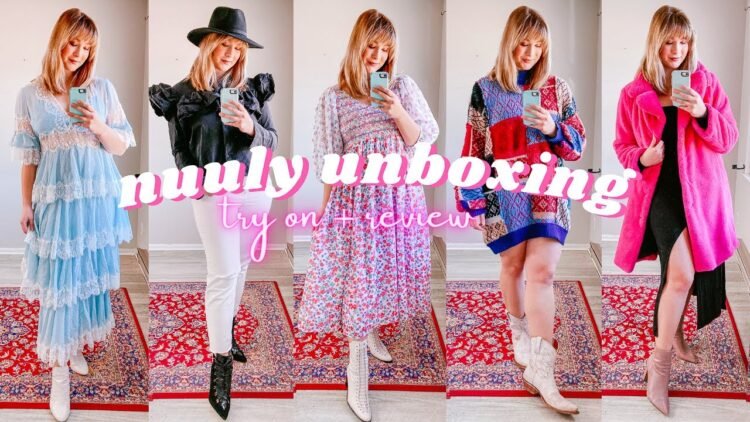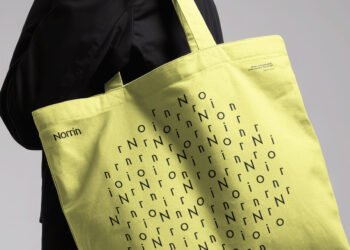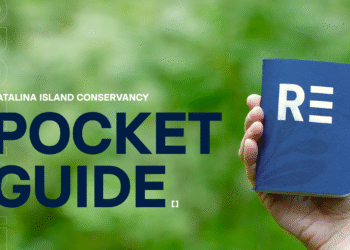Nuuly, the clothing rental enterprise from Urban Outfitters Inc., also home to Anthropologie, Free People, and Urban Outfitters, is winning in a market that Nuuly did not create. Nuuly is the pioneer. But, right now, Nuuly is the possessor of the prize. There is history behind this sort of situation where the category creator craters and a fast follower flips to the top spot. As The Wall Street Journal’s Heard on The Street column described Nuuly, “How Urban Outfitters’ Nuuly Stole The Show From Rent The Runway: The future of online clothing rental doesn’t lie with the company that pioneered it.”
How a fast follower bests a pioneering innovator is meticulously outlined in two of the most insightful marketing articles (mentioned often on Branding Strategy Insider). Two professors, Peter Golder and Gerald Tellis wrote the book, as it were, on pioneering brands. Their first article, written In 1993, is “Pioneer Advantage: Marketing Logic or Marketing Legend?” The article raised one of marketing’s most interesting questions: Do pioneers in a category always grow and become great, enduring, profitable brands? Or, are pioneer brands inventive but impermanent, replaced by an “early leader” or “follower” brand?
Following up on their seminal thesis, Golder and Tellis wrote, “First to Market, First to Fail? Real Causes of Enduring Market Leadership” (1996). The abstract of the second article stated that Golder and Tellis discovered “… many category pioneers fail while current brand leaders are not pioneers.”
This article is part of Branding Strategy Insider’s newsletter. You can sign up here to get thought pieces like this sent to your inbox.
Reading the two articles is like being in a brand-based way-back machine. The cited pioneering brands that created categories and were shining stars for their eras, all crashed, burned, and faded away. But, early leaders and followers introduced other brand-businesses that became, and in many cases, still are the category winners.
Think about disposable diapers. Today, we have two brands that own the disposable diaper category: Pampers and Huggies. Sure, there are other niche brands, but Pampers and Huggies lead. Yet, neither Pampers nor Huggies was the original disposable diaper. Before there were Pampers and Huggies, there was Chux. Chux , born in 1935. Yes, 1935. Chux were expensive but “great for traveling.” In 1962, Consumer Reports magazine stated that Chux were “the best” disposable diaper. Chux was a brand from Chicopee Mills, owned by Johnson & Johnson. Several years later, both Pampers and Chux were evaluated as best buys. The rest is history.
Golder and Tellis did not just look at packaged goods. They also focused on personal computers and video recording.
Let’s face it: we all believe that Apple opened the door to personal computing. And, what about HP? But, no. MITS (Micro Instrumentation and Telemetry Systems) was first. As stated in their article, Golder and Tellis recounted that in 1976, Business Week “referred to MITS as the IBM of home computers.” Additionally, Business Week stated that MITS was the “de facto standard” for the category as well as the industry. Okay, but today MITS is never thought about or, worse, unknown.
As for video recording, something we really no longer need to do with streaming, Ampex was the hands-down leader. Ampex created the video recorder. That was in 1956! An Ampex video recorder cost $50,000.
At the time, RCA and Toshiba were following behind Ampex. The category was intriguing for Sony, JVC, and Matsushita, however. Ampex disappeared while Sony, with its customer focus and $500 price tag, for example, endured and thrived.
Golder and Tellis discuss other pioneer brands that created a category and were later surpassed by entrants. You may think that Miller Lite was the first light beer, but no. For those who live in the brand history repository, there is Gablinger’s. Gablinger’s was a brand from Rhinegold (another long-gone brand-business). Rheingold was a popular New York State beer brand, which once held 35% of New York’s beer market share. Rheingold died in 1975. As for its pioneering light beer brand, Gablinger’s was never able to match the marketing heft of Miller Lite, powered by Philip Morris. Philip Morris funded a marketing effort that few could match. Remember that Philip Morris had a lot of cash: the firm owned the Marlboro brand.
And, there was the brand described in 1960 as “The world’s biggest chain of highway restaurants; the pioneer in restaurant franchising; a most strongly entrenched factor and highest quality investment; and, the most fabulous success story in restaurant chains.” No, not McDonald’s: Howard Johnson’s. Howard Johnson’s orange-roofed establishments were safe havens on America’s new highways.
The annals of brand-business are littered with the detritus of dead brands, brands that were once the innovators. Golder and Tellis found that pioneer brand-businesses had a failure rate of 47%. Pioneering brand-businesses had a mean market share of 10% and “were current leaders in only 11% of categories. Early leaders, defined as “firms that enter after pioneers but assume market leadership during the early growth phase of the product life cycle,” had a minimal failure rate with a market share “three times” that of the pioneer. Early leaders were, at the time, brand businesses that entered the category 13 years after the pioneers.
The result of Golder’s and Tellis’ research found that early market leaders, have five critical factors that drive performance:
- Vision of the mass market,
- Managerial persistence,
- Financial commitment,
- Relentless innovation, and
- Asset leverage.
Vision of the mass market
Nuuly has a vision. It is a vision at mass market pricing. Nuuly’s website states:
Change Your Clothes
Nuuly was born to help you change your relationship with clothing—wherever you are on your sustainability journey, at whatever pace feels right for you. Small, repeatable actions can make a significant impact, and it’s our responsibility to the planet to ensure that impact is a positive one. This is how we’re working to do that.
Circularity
Nuuly’s fashion ecosystem reduces the waste of one-off purchases and offers secondhand items a new life. For most of us, fashion starts and ends with a new purchase: an item is bought, worn, discarded, and a new item is bought. Nuuly shifts fashion from a cycle of buying and discarding to a system that minimizes ownership and maximizes newness. Less cycle, more circular.
Features
Monthly Wardrobe Refresh: Rent six items of clothing for $98 per month to rotate styles and brands without the commitment of purchasing.
Convenient Shipping & Returns: Enjoy fast, free shipping on all orders and free returns using our provided reusable shipping bag.
No Hidden Fees: You won’t be charged late fees or fees for accidental damage, as Nuuly handles cleaning and repairs for all returned items.
And a list of multiple other benefits.
Having the funds to hang in there, innovate, and market matters. Financial commitment allows brand-businesses the luxury of long timeframes. As the Golder-Tellis research showed, it is not just having the money: it is the willingness to spend resources on the vision. Nuuly relies on the support of Urban Outfitters, Inc. The reporting indicates that Nuuly buys inventory within the Urban Outfitters, Inc. system “at cost” and “nearly half of Nuuly’s items come from sister brands.”
Managerial persistence is a mindset that focuses the enterprise on long-term commitment to a product or service. This may take years. But, as successful brand businesses know, brand building is an ongoing, never-ending process towards a North Star. The Wall Street Journal reported that Nuuly is looking long-term. Nuuly is actually making clothing rental – a difficult business with a plethora of moving parts and responsibilities – work.
Relentless innovation is crucial for achieving long-term success. Pioneers have an invention. But, as we have learned with technology, there is always something new, better, smaller, faster, or more creative. Firms that lack the drive to continually innovate tend to fall behind. Nuuly’s innovation lies in its portfolio of branded clothing items. “Nuuly is about discovering something new, loving something you never expected, and surprising yourself in the best possible way. It’s about getting creative with what you wear every single day—not just on special occasions.” As the website tells us, the clothing items are “Scouted and Stocked.” There are hundreds of brands and designers, leading to a “Our collection is stocked with brands you already love and new ones to discover, up-and-coming designers, premium denim labels, and exclusive vintage pieces.”
And, finally, the professors point out that late entrants can often become leaders in a category if they already dominate a related category, assets that they can leverage. For example, in the early 1960s, Royal Crown (RC) owned the diet soda marketplace. Nuuly leverages its ability to “piggyback off of its parent’s existing customer base, expertise, and purchasing power. Apparently, Urban Outfitter, Inc. took the initial investment. As one retail analyst said, “Rental only works if you already have scale. Urban Outfitters Inc. could afford the upfront investment and had the supply chain expertise to do it right.”
According to Golder and Tellis, these five factors were more important in determining successful long-term leadership than having the pioneering invention. And, even though these principles were observed 36 years ago, they remain true in our high-tech, AI-driven, digital world.
These factors seem to have worked against Rent The Runway and the unmentioned Stitch Fix.
Rent The Runway originally offered clothing for events and, to a lesser extent, business. Rent The Runway was not, in general, an “everyday attire” brand. Wedding attendance, parties, galas, New Year’s Eve, and all sorts of dressy occasions were the focus of Rent The Runway. Rent The Runway is gaining some traction after suffering during and post-Covid. Earnings results show that although active subscriber count at Rent The Runway is at its highest ever, the brand cannot seem to generate “consistent profit.” Or, as The Wall Street Journal writes, “positive cash flow annually. Revenue fell more than 7% year-over-year to just under $70 million in its fiscal first quarter ended in April.”
Nuuly, the follower, had an operating profit in its last fiscal year. Nuuly contributes almost 10% of Urban Outfitters, Inc. total sales.
As for Stitch Fix, it too is in a precarious position. To be fair, Stich Fix was initially a combination of outfit curation that fit YOU. A subscriber filled out a detailed questionnaire so the “curators” at Stitch Fix could find items that reflected you. Then, if you so desired, you could purchase the items. Otherwise, the items were a rental. Reporting from September of 2024, indicated that Stitch Fix management stated the brand’s revenue is not expected to grow due to “a dwindling number of clients.” Remember, Stitch Fix is a personal styling brand that curates outfits you can wear and eventually buy, or not. Stitch Fix was not designed to be a clothing rental enterprise.
As a marketer, your job is to compete. Compete differently with The Blake Project.
Stitch Fix CEO, Matt Baer, said, “While there is a lot of work still to do, I am confident we are on the right path to continue to improve the trajectory of our business, which includes returning to revenue growth by the end of fiscal 2026.” The Earnings Call was downbeat and “gloomy.”
It seems that, once again, being the pioneer is not necessarily the pathway to enduring profitable growth.
Nuuly demonstrates that the clothing rental business has a strong demand. And, Nuuly’s ability to satisfy the five key criteria outlined by Golden and Tellis has made Nuuly the category leader. Rent The Runway and the sadly suffering Stitch Fix appear to be on their way to the land of Chux, Gablinger’s, and Howard Johnson’s.
Contributed to Branding Strategy Insider by: Joan Kiddon, Partner, The Blake Project, Author of The Paradox Planet: Creating Brand Experiences For The Age Of I
At The Blake Project, we help clients worldwide, in all stages of development, define and articulate what makes them competitive and valuable at pivotal moments of change. Please email us to learn how we can help you compete differently.
Branding Strategy Insider is a service of The Blake Project: A strategic brand consultancy specializing in Brand Research, Brand Strategy, Brand Growth, and Brand Education
Post Views: 0


















